Shooting the bries: From light to fully loaded - how does your favourite cheese rate on the healthy scale?
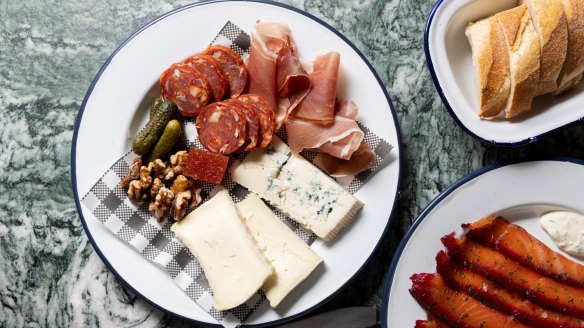
If your idea of the ultimate food indulgence is a platter filled with soft and hard cheeses, there's good news and bad news. Unlike sweet treats and rich desserts, cheese has a lot to offer from a nutritional perspective – it's packed with protein, calcium, magnesium and vitamin B12.
The downside is that cheese is also a high-fat food, with the average cheddar or creamy cheese containing upwards of 30 per cent fat. This means that if rich cheeses such as triple-cream brie are your thing, portion control is paramount.
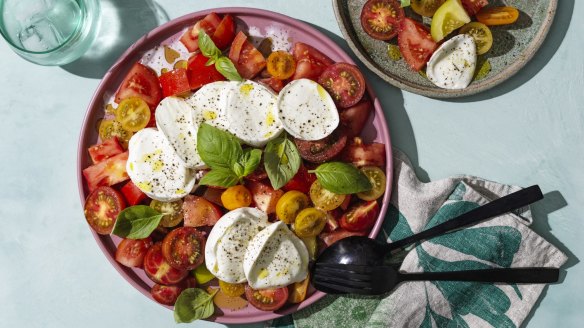
Here's the lowdown on the lower-fat options – and the ones to file under "occasional indulgence".
The lightest options
Cottage cheese
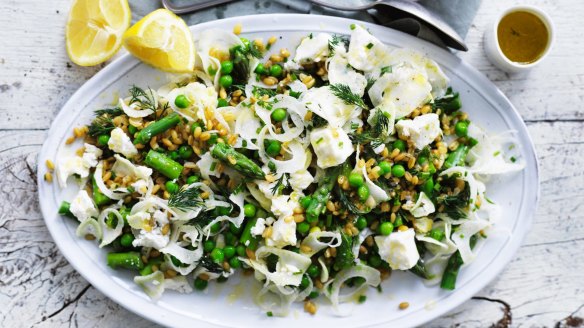
Made from the curd of milk, which gives it its loose, soft texture, cottage cheese is one of the most nutrient-dense foods around. It contains more than 16g of protein for every half-cup (81g), along with calcium, magnesium and vitamin B12, but very few kilojoules and as little as 1 per cent fat. It's popular with those who are keen to increase their intake of dietary protein minus any fat, and can be enjoyed with fruit as a high-protein breakfast, on crackers as a filling snack, mixed into dips or added to salads for a significant protein boost.
Ricotta
Another lighter white variety of cheese, ricotta is made with the whey left over from the production of other varieties of cheese. Creamy in appearance and taste, ricotta can be found in full-fat and low-fat varieties and is much lower in fat than regular cheese, averaging just 10 per cent fat. It's rich in protein and calcium, and is a great addition to toast, vegetable bakes and salads.
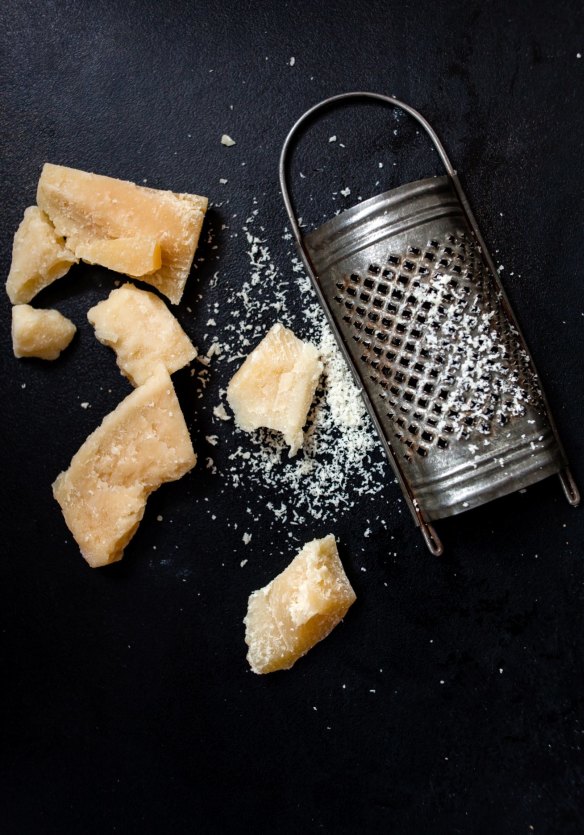
Mozzarella
An Italian cheese traditionally made from the milk of a water buffalo, mozzarella has a lower fat content (less than 20 per cent) than regular cheese and a lower salt content overall, making it one of the healthier cheese options. Buffalo mozzarella contains high amounts of protein and calcium. Supermarkets sell light varieties of mozzarella that contain as little as 15 per cent fat, although these are more processed than fresh varieties you can find in delis and speciality stores.
Feta cheese
Traditionally made from sheep's or goat's milk, feta is a soft, crumbly cheese aged in brine, which gives it a salty tang. Its flavour ranges from mild to sharp. It's slightly lower in fat than cheddar, with reduced-fat feta containing 15 per cent fat, and regular feta 20 per cent. But it is relatively high in sodium, with almost twice the salt content of cheddar. Feta makes a tasty, calcium-rich addition to salads and, thanks to its rich flavour, can be enjoyed fully in small amounts.
Goat's cheese
Known by the French as "chevre", goat's cheese is made by adding a culture to the raw milk and allowing it to curdle, before pressing the curd and draining off the whey. Its fat content is similar to that of feta cheese (18-21 per cent). Goat's cheese undergoes minimal processing, contains very little salt, and has an intense flavour, so a small portion makes a big impact without too many drawbacks from a nutritional perspective. It can be enjoyed as a spread or crumbled over a salad for maximum flavour and fewer calories and fat than if you use heavy halloumi or cheddar.
A little heavier
Parmesan
A hard, crumbly pale yellow cheese, true Italian parmigiano reggiano has a rich flavour thanks to its long maturing period of between 12 and 90 months. While not lower in fat than regular hard yellow cheese, its strong flavour means parmesan can be used sparingly as a flavoursome topping, making portion control simpler.
'Light' or 'reduced fat' cheese
Whether you opt for reduced-fat Swiss, jarlsberg or cheddar-style cheese, the good thing about choosing yellow cheeses that are slightly lower in fat overall is that they are rich in calcium, magnesium and protein, and retain the flavour of regular cheese, minus 25 per cent of the fat and kilojoules. You can find varieties such as light jarlsberg with as little as 15 per cent fat – a great option for those who love cheese and would like to eat more than a 20g serve each day while keeping an eye on fat and kilojoules.
The full-strength options
Cheddar
Cheddar cheese is an aged, semi-hard cow's milk cheese. Milk curd is heated and kneaded with salt before the whey is drained and the remaining curds are formed into blocks and left to mature for a number of months in controlled temperatures. Cheddar is high in protein (26 per cent) as well as calcium and a number of key nutrients involved in bone development, including magnesium and phosphorus. A single 30g serve of cheese (roughly the size of a matchbox) provides 8g of protein and more than 200mg of calcium, making it an extremely nutrient-rich food choice. The main issue is that regular cheese is 30 to 40 per cent fat, or up to 10g of fat per 30g serve, a significant proportion of which is saturated. A healthy way to enjoy the flavour of cheddar is to shave the block into thin slices with a cheese slice, rather than hacking chunks off with a knife.
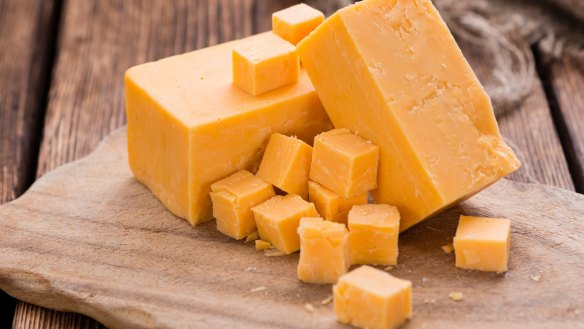
Enjoy occasionally
Soft cheese (brie, camembert, blue)
Soft cheeses are made by introducing specific moulds to milk. They are matured for only a short time and have a much higher moisture content than hard cheese. Rich in flavour and texture, soft cheeses contain at least 30 per cent fat and their luscious texture makes them exceptionally easy to over-consume. The high kilojoule and fat content mean soft cheeses are best consumed no more than once or twice a week in controlled portions – if that is possible.
Cream cheese
While reduced fat or "light" varieties of cream cheese are available, in its natural state cream cheese is 35 per cent fat with a quarter of the protein of regular cheddar. Cream cheese is traditionally made with leftover milk that is soured with lemon juice or vinegar and then strained. Modern processing now sees cream cheese made with emulsifiers and stabilisers to keep it consistent for purchase. It's often mixed with savoury or sweet ingredients to make a spread or dip. Because cream cheese lacks the protein and nutrient profile of regular cheese, it's on the "occasional indulgence" list.
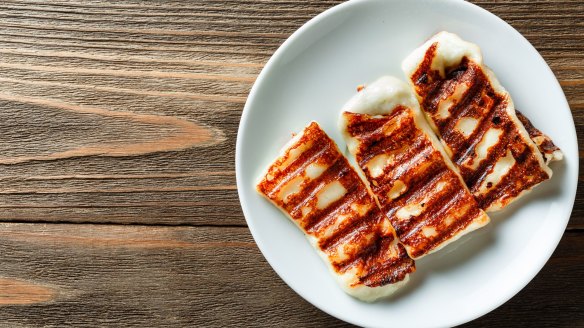
Halloumi
Bad news, halloumi fans. While this delicious semi-hard cheese contains slightly less fat (26 per cent) than regular cheddar, it has more than twice the sodium content, thanks to the brine used to preserve it. Traditionally made from a mixture of goat's and sheep's milk and set with rennet, halloumi has a high melting point and is often served grilled or fried. One of the biggest issues it poses is the risk of overeating as it is easy to demolish a 200g packet in a single meal, which equates to an extra 2845 kilojoules, 54g of fat and almost 3000mg of sodium. So when it comes to halloumi, portion control is crucial.
Susie Burrell is an accredited practising dietitian and nutritionist and holds a master in coaching psychology.
The best recipes from Australia's leading chefs straight to your inbox.
Sign up